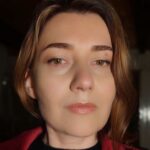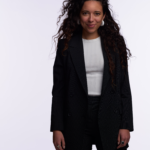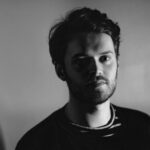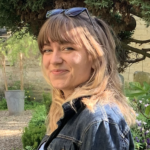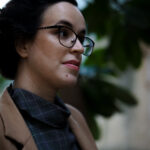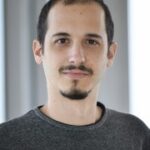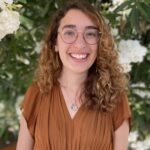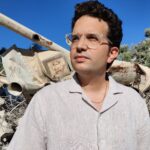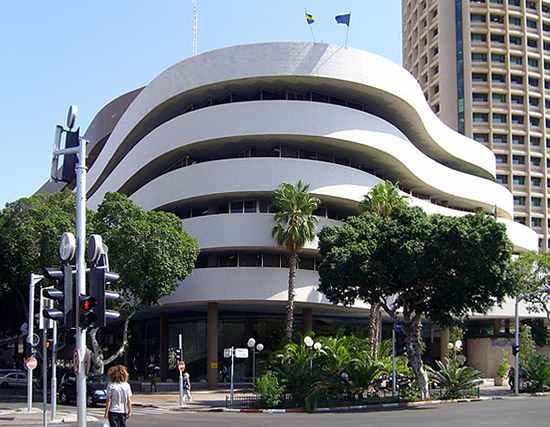
July 3 (Goethe Institute, Tel Aviv), 2:30-5pm
Greetings; round of introduction; preliminary discussion on the festival programme and the roundtables ahead; assignments
Toward the performance of Neue Vocalsolisten, we will discuss Alex Ross’ piece on Jennifer Walshe while considering the manifestos by Walshe and Bauckholt; and toward the performance of Klaus Lang’s cantica christinae III (2020) we will address Daniel Wilson’s arguments and methodology in his essay on Lang’s Trauermusik.
July 4 (Goethe Institute, Tel Aviv), 10:30am-5pm
10:30-11:30 Looking back; yesterday’s performances
11:30-12:00 Coffee break
12:00-1:30 The Justification of Music Criticism
Based on an English translation of Adorno’s lecture Reflections on music criticism [will be published on partisan-notes.com – see the German text and a deepl translation below], we would discuss the question how to justify art critical judgments in general and music criticism in particular. Justification will be understood in a twofold way: first, what are good kinds of reasons one can give in order to defend a music critical judgment? What are valid arguments in a music critical debate? And second, what is art criticism itself good for, what is the reason for music criticism to exist, what is its utility or necessity?
1:30-2:30 Lunch break
2:30-3:30 Q & A with Neue Vocalsolisten
3:30-5:00 Paradoxes of Contemporary Music and the Meanings of Contemporaneity
This discussion follows Christoph Haffter’s critique and afterthoughts on the Festival Musikinstallationen Nürnberg alongside Terry Smith’s latest attempt to map the aesthetics of contemporaneity (read his introduction and ch. 1). This would be a combined opportunity to discuss not just the aesthetics and ethnographies of contemporary music and contemporary music festivals, but also to consider prospective shared aesthetic grounds with art historians of the contemporary, their methodologies and historiographies.
July 5 (Goethe Institute, Tel Aviv), 10:30-5pm
10:30-11:30 Looking back; yesterday’s performances
11:30-12:00 Coffee break
12:00-1:30 Throwntogetherness
Taking our cue from Orvar Löfgren, the discussion will address the meshing of musical temporalities in contemporary music as well as the sedimentary dimension of these temporalities on our hearing of and writing about contemporary music. Participants are invited to bring examples of their choice to this theoretical framework, including examples concerning the ethnographies (and auto-ethnographies) of the contemporary
1:30:-2:30 Lunch break
2:30-4:00 The Voice in Modernism and Posthumanism
Based on Roland Barthes’ “The Grain of the Voice” and Jennifer Walshes “Ghosts of the Hidden Layer” we will discuss the varied significance of the voice as an embodied and political instrument in contemporary music of the twentieth and twentieth-first centuries.
4:00-5:00 Roundtable with Composer Alex Paxton
July 6 (Goethe Institute, Tel Aviv), 10:30-5pm
10:30-11:30 Looking back; yesterday’s performances
11:30-12:00 Coffee break
12:00-2:00 WORKSHOP; presentations by TM fellows I
Ed Cooper (Leeds University), “Bodies and Intertextuality: A Case Study of Rebecca Saunders’ traces (2006/9)”
Though often overlooked, reading is an embodied act. Thomas McLaughlin (2015) claims that procedures and habits specific to each reader—the flicker of the eyes or hand movements, for example—evidence the body as an essential and active agent in the interpretation of a text. Similar claims have been made about listening, whereby the body is adjusted in relation to different scenarios, filtering the sound accordingly (Ihde, 2007). As such, bodies are sorts of melting pots for these two techniques of interpretation. In this presentation, I utilise Gilles Deleuze’s ideas to demonstrate how the sounds of a piece of music and its surrounding text interact with difference through the body. I deploy the slippages between meanings of ‘bodies’ in Deleuze’s writings to present a framework for this intertextuality, which foregrounds relations as identity. To exemplify these ideas, I pose a case study of Rebecca Saunders’ traces (2006/9) for chamber orchestra. I examine the relation of tension between the form and timbres of sounds, her opaque programme note comprising quotes and definitions, and text others have written about the piece. traces exists as the relations between these facets encountered by the body. This triad demonstrates how the piece might be understood as a ‘virtual idea’ (Deleuze, 1968) in constant, destabilising dialogue with difference, questioning phonocentric conceptions of the musical work, in favour of intertextual relations as identity.
Sarit Shley-Zondienr (Hebrew University of Jerusalem), “Tracing the timbral differance in Rebecca Saunder’s Void (2014)”
In Rebecca Saunders’ Void (2014), Timbre becomes a crucial element building the piece’s phrasing, inner syntax, and structure. Although Saunders’ notation is very detailed, timbre remains partly vague; it is not fully written and as such creates constantly-moving-gestures. This fluctuation emphasizes, paradoxically, the well-built form of the piece. The complex relations between free-being sound material and structural organization is not new in art-music, and its sources go back to the emancipation of noise, as Edgar Varese, Pierre Schaffer and John Cage had remarked in the first half of the twentieth century. While these three pioneers referred to timbre, noise, and sound, as a challenge for building a coherent, rational, planned form, its manifestation in Void proves that its ephemerality and dependency on specific material aspects (such as location of the instruments on stage, or reverberation of the percussions in different combinations) creates freedom-in-defined-borders, distinguishes its solid existence.
I argue that in this processual aesthetic transformation, over the last half a century, timbre/sound/noise has changed its role: from a chaos agent to an actor designing new forms which contain both solid borders and fluid sonic materials. Saunders’ music demonstrates how a rational, gradual variation form can correspond to noisy, uncontrolled sound ingredients, while they both embody the fluid, solid, transformative music of the present.
Zola Rebecca (Columbia University), “Transience and Precarity in New York City’s Israeli Jazz Scene”
In the neoliberal, post-pandemic music industry, the New York City jazz scene is a music scene barely holding onto its financially precarious existence. Within this scene is the Israeli jazz community, a large and growing group of jazz musicians who are disproportionately thriving with international tours, record deals, and consistent press coverage. For such a small country in the Middle East, one might wonder how such a country has become such a successful export of jazz musicians, and how these musicians manage to sustain such precarious livelihoods in the most expensive city in the world. Through ethnographic research, this project addresses how the Israeli jazz scene in NYC operates, both as a mutual aid community, as a community containing generational wealth disparities, and as a community whose identity politics, namely its national, religious, and ethnic identity, is inherently tied to the gig economy in which it operates.
Littler Sapphire (Leeds University), “Metaphors as temporalities: Understanding non-human time in George Crumb’s Vox Balaenae”
George Crumb’s Vox Balaenae (Voice of the Whale) is a work for amplified flute, cello, and piano. The numerous writings relating to the work are rich with metaphor, and describe the extended techniques used to replicate the sounds of the natural world, predominantly the Humpback Whale.The paratexts associated with Vox suggest alternate temporal frameworks: biotemporal; and cosmic.
Alan Konzinn writes that Vox represents ‘the creation of the universe’, alluding to cosmic temporality, whereby all species, societies, and cultures contribute to the overall amalgamation of linear time in the cosmos. Through mimicry of animal sounds using extended technique, Crumb invites listeners to recognise the music as something which is more than purely musical, ensuring we hear the techniques as metaphorical projections of cosmic temporality through biotemporality – the animalistic experience of time
With discussion of J. T. Fraser’s ‘Five Species of Time’, we can explore how metaphors can act as suggestions for alternate temporalities – with focus on biotemporal and cosmic – in Crumb’s Vox Balaenae. Further examples of the relationship between metaphor and alternate temporalities will be uncovered during the Tzlil Meudcan festival, which will support this analysis and subsequent article for Tempo.
1:30:-2:30 Lunch break
3:00-5:00 WORKSHOP; presentations by TM fellows II
Tuchynska Tetiana (Max Plank Institute for Empirical Aesthetics), “Ukrainian Music in time of war: Resistance Strategies and the formation of National Identity”
My talk focuses on the impact of war on the listening, performance and creation of music during the Russian-Ukrainian war. I will also touch upon the types of music-making, the functions of music during the war, how Ukrainians’ musical preferences changed during the war, and what new forms of music and new genres are emerging.
Ukrainians’ lives have been shattered by the war and they have been placed in a situation of an existential choice, facing loss, death, and destruction on a daily basis. Under these circumstances, music takes on a different meaning for everyone, but very often it helps to cope with hopelessness, despair, and the pain of loss, as much as it helps people to live through their own experiences of war and persevereThe talk will feature the works of Ukrainian composers, like Andrii Merkhel, Tetiana Khoroshun, Ihor Zavhorodnii in addition toUkrainian underground music.
Ziv Slama (The Hebrew University of Jerusalem), “Grappling with Westernness”
Westernness remains the sole criteria by which art music in Palestine/Israel has been defined, much in the way it had conditioned the entire Zionist project. Art music and Westernness were therefore synonymous; the first had to meet the latter’s criteria in order to gain its status as art music. This paradigm has been slow to change and difficult to challenge. Imports of non-Western musical traditions were often seen as mere raw materials in need ‘corrections’ and as such they were left outside the discourse that catalyzed aesthetic shifts. My talk discusses these shifts, focusing particularly on Neharot Neharot by Betty Olivero (2006) and Behind All This…(1997) by Mark Kopytman.
Olivero seems to undermine the relationship between what is being embellished and the embellishment itself, as ornamentations take up more space on the page and consume more musical time than the ornamented material. Paraphrasing a specific type of Arab ornamentation, these embellishments challenge the Western classical musician in fundamentals like sound production. Kopytman, comparatively, employs in his works heterophony, namely, the simultaneous unfolding of variants for the same melody. A central texture in Arab classical music, heterophony is one of its key features, yet Kopytman had developed it against the backdrop of polystylistic compositional approaches in the USSR of the 1960s and 70s (of which he was a part), and furthered it in Israel after studying Yemenite Jewish music. In other words, Kopytman had developed his writing regardless of the Western criteria that had evolved in Israel. Olivero and Kopytman thus attest to the power relations in art music in Israel while signaling crucial discursive and aesthetic transitions.
Sikau Lea Luka (Cambridge University), “Rehearsing Tempo”
Enmeshing Tempo with the festival Tzlil Meudcan (updated tone), I explore the times and datedness of new music. When referring to a musical work (20**), the date following the composition title usually refers to the date of composition or the first performance. What remains left out are the times of temporal negotiation – between performers and composers, schedules and spaces, instruments, and technologies. This article calls for an inclusion of the rehearsal process in the temporal narratives that new music tells via its dates. Music emerges from collaborative processes in compound temporalities, not from singular numbers or a singular author figure.
From dates to timespans, I use Tempo as a narrative platform to introduce temporal analysis as a framework for understanding the complex agential relations in the creation of new works. Enabling tones to be “updated” and music to be “new”, the rehearsal probes unheard-of sounds in scheduled times. From notated tempi to the histories of the material which orchestrates it, from the musician’s lifetime devoted to rehearsal over the time the composer invested for their drafts, from the deep time of metals used in computers, over the noumenal half-life period of plastics, to the timings of algorithms. The nesting of protean temporalities produces syncopations that relationally affect each other and turn new music into more-than-human times. This article specifically focuses on dynamics of schedules, material deep times and algorhythms (to use Shintaro Miyazaki’s term) in rehearsals of new music theater projects. I conceptualize rehearsals as structuring an in-between phase which produces a looping rhythm, while cutting apart new music’s datedness.
Amir Lekach Avivi (The Hebrew University of Jerusalem), “Masking Prayers; Jewish Liturgy and Theater in Bardanashvili’s Poem-Dialogue”
Josef Bardanashvili’s first work to be written after his graduation, and the first one to be performed in main concert venues and events in Georgia, Russia and other republics of the Soviet Union, was the 1975 Poem-Dialogue for cello, guitar, two pianos and four horns. Poem-Dialogue combines Bardanashvili’s two main fields of interest: his ethnographic fieldwork with Jewish musical traditions, which he had conducted independently during his conservatory studies, and his experience in writing music for the theater, during and since the 1970s. Poem-Dialogue features one of Bardanashvili’s first translations of ethnographic knowledge of Jewish liturgical musics into a concert piece (often marked in the score as quasi-canti) while molding theatrical affects. Most salient of these effects is the second piano part wherein the player was required to play several instruments, including trumpet’s mouthpiece and whistle, as well as singing and conducting the ensemble. This talk will examine the intersection of these two imports, from Jewish liturgy and theatre, by placing it as part of the new tendencies within Soviet art music during the 1970s. The intersection of liturgical and theatrical components make the piece as a musical “happening”, a concept that was increasingly adopted among young Soviet composers during those years. Indeed, this very aesthetical framing enabled Bardanashvili to cast Jewish liturgical traditions as the equivalent to the ancient and exotic traditions which featured in contemporary Soviet “happenings”, while veiling the more political meanings these traditions had acquired in earlier Soviet art music.
Tzlil Meudcan 2023 Musicology Fellows
Tetiana Tuchynska, Max Plank Institute for Empirical Aesthetics
Lea Luka Sikau, Cambridge University
Ed Cooper, University of Leeds
Sapphire Littler, Leeds University
Sarit Shley-Zondiner, Hebrew University of Jerusalem and the Jerusalem Academy of Music and Dance
Amir Lekach Avivi, Hebrew University of Jerusalem
Rebecca Zola, Columbia University
Ziv Slama, Hebrew University of Jerusalem
